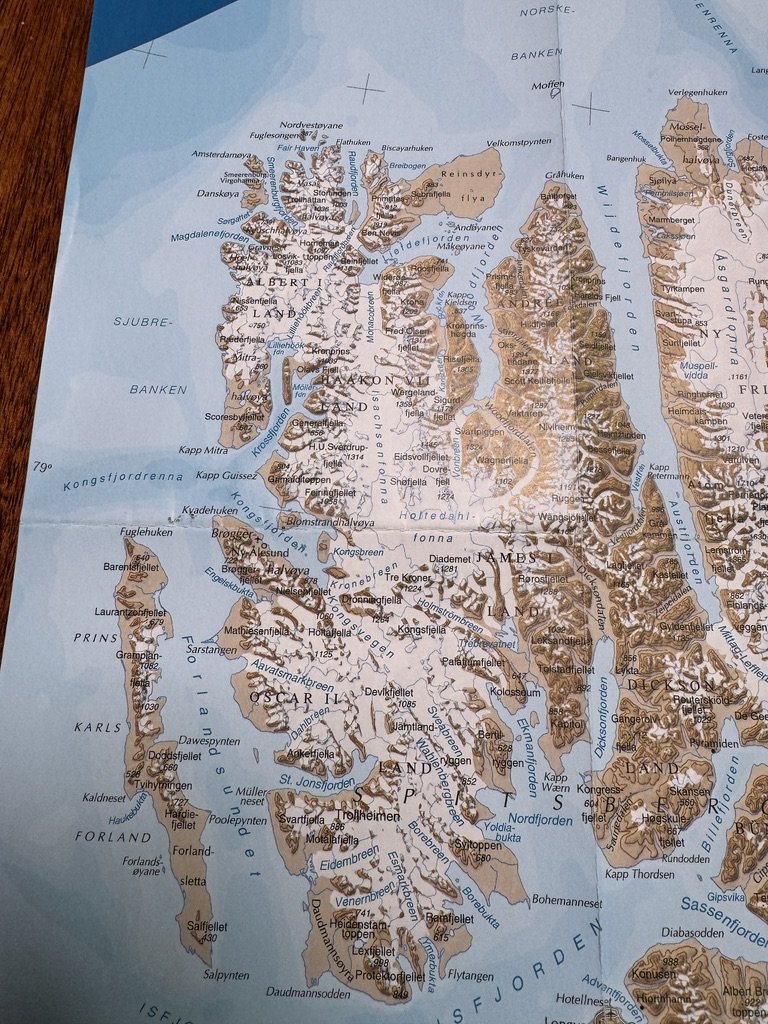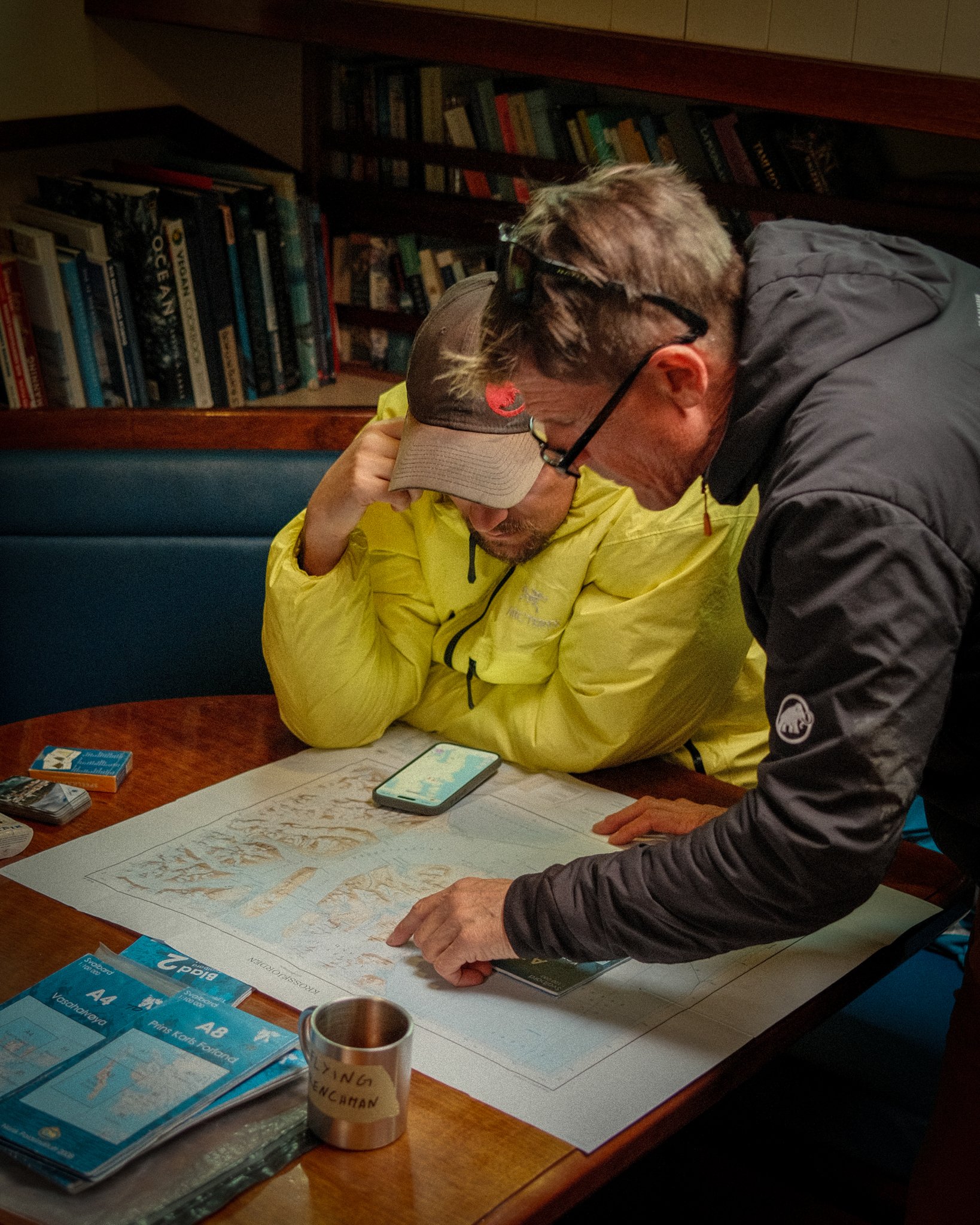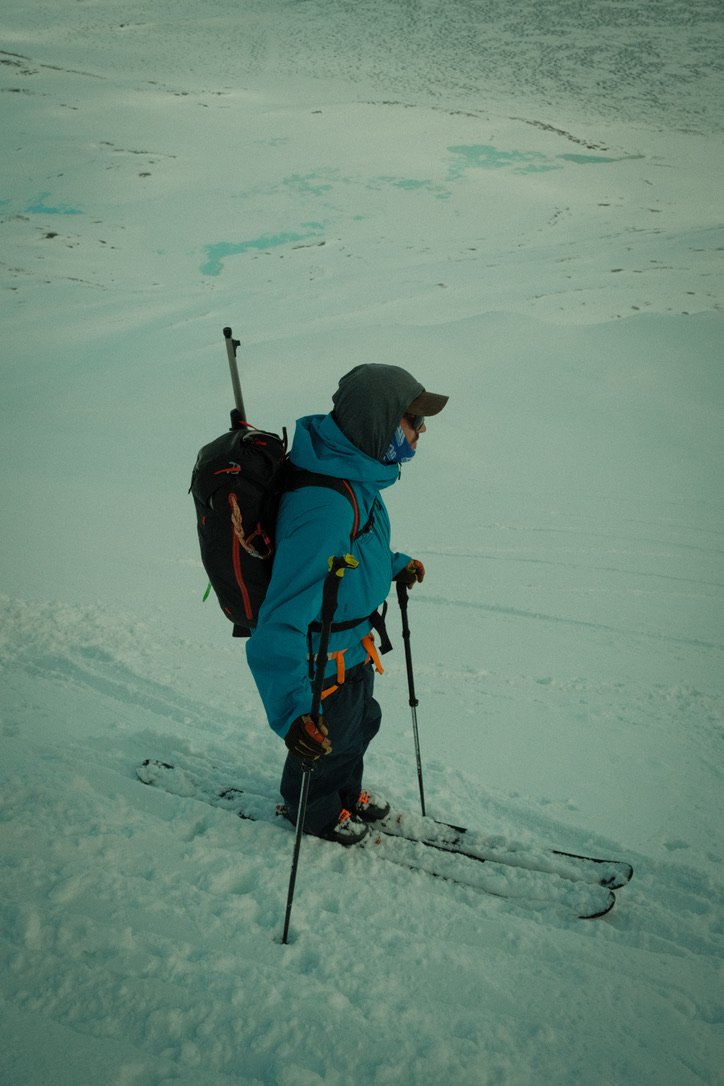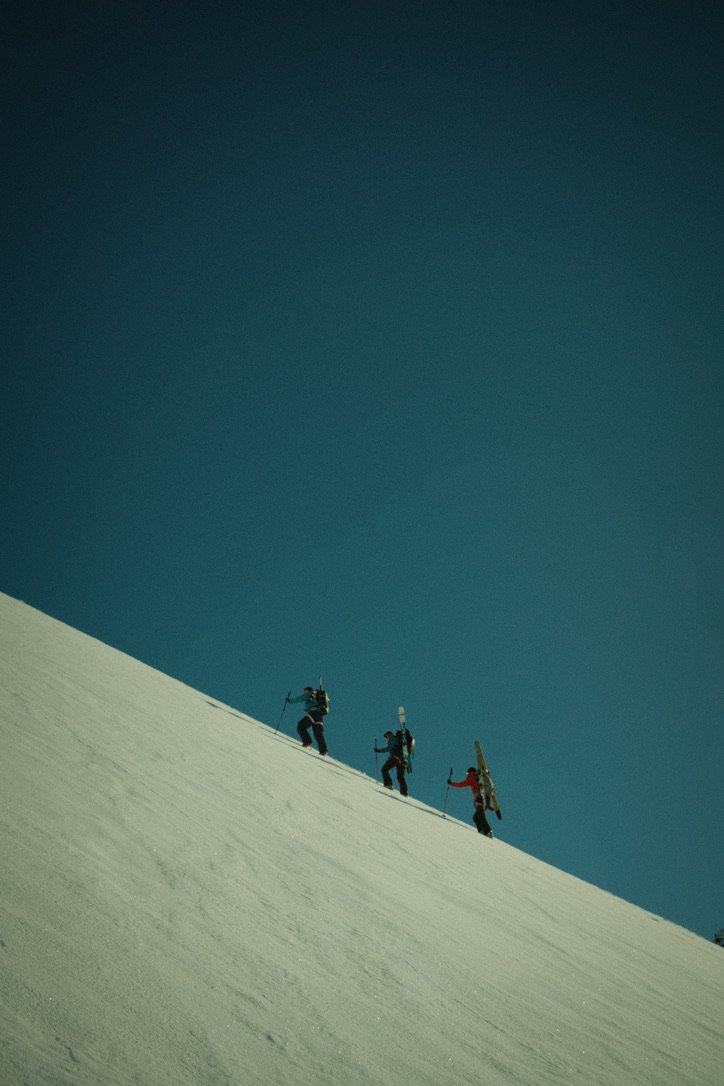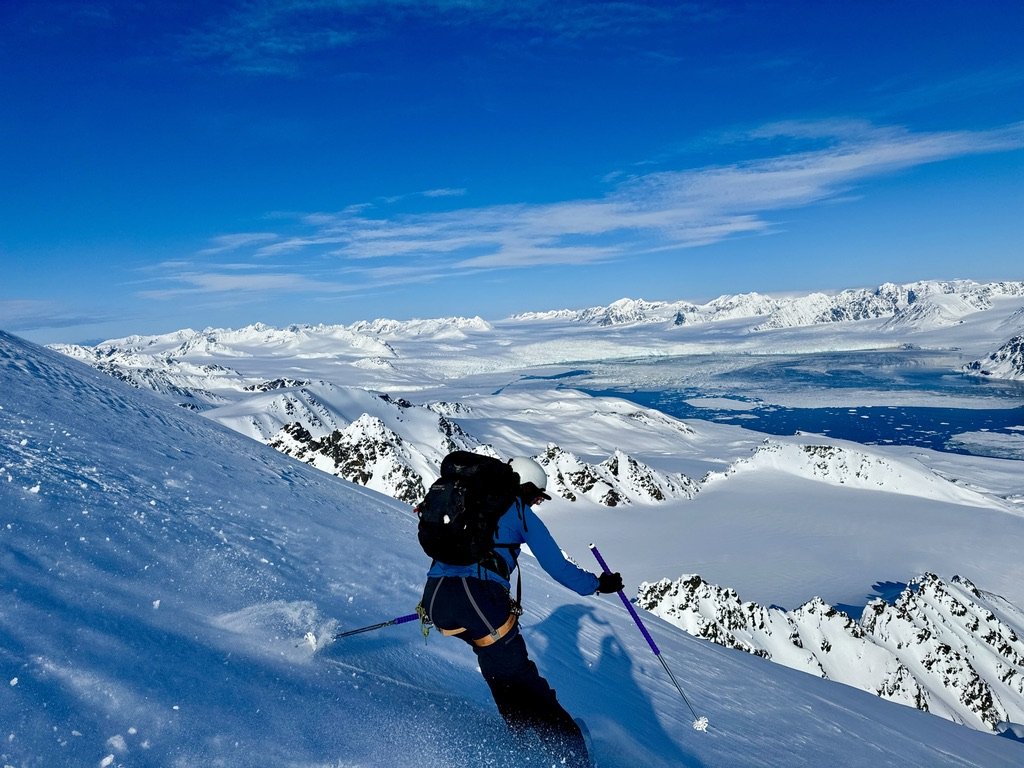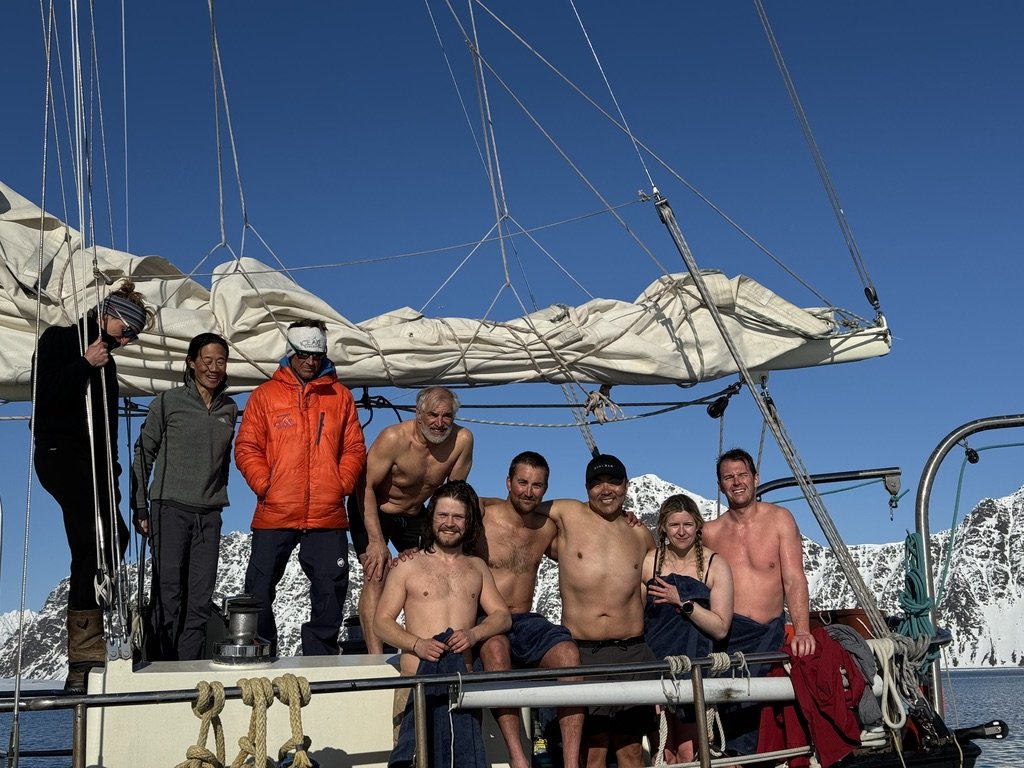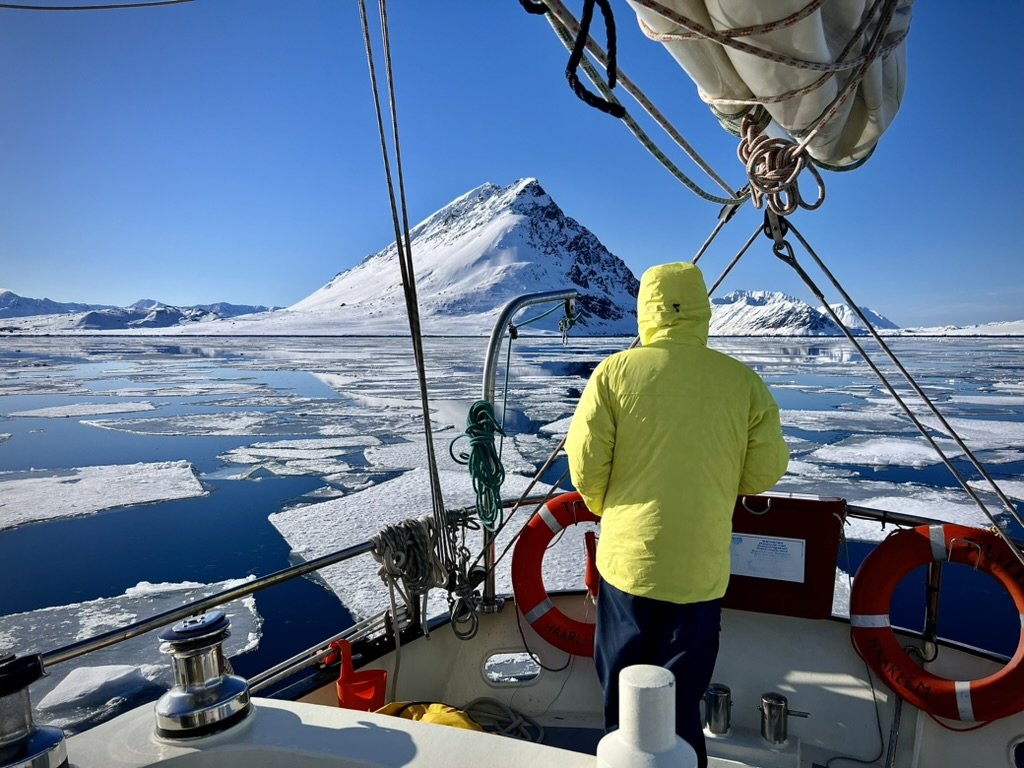Svalbard
It has been many months since I had the incredible opportunity to ski in Svalbard. Typically, I find it essential to write about such experiences right after they happen, while the memories are still vivid. But life has a way of intervening. More trips unfolded, and while the details may have faded, the essence of that adventure lingers, waiting to be expressed.
Skiing in Svalbard is not merely a novelty; it has become a sought-after experience for many adventurers. Guides and their clients have long ventured to the far reaches of the north, drawn by the promise of untouched skiing and breathtaking views. The terrain is primarily accessed by boat or ship, creating a perfect synergy between skiing and sailing. This combination has gained popularity, and for those who haven’t experienced it yet, I can only say you’re missing out.
Svalbard feels almost mythical. For those unfamiliar, it lies far above the Arctic Circle, beyond Norway and its neighboring countries, specifically between 71 and 80 degrees north latitude. The islands hold a rich history; in the early 17th and 18th centuries, they served as a base for many whalers. By the 20th century, coal mining began to shape the area, and in the 1920s, a treaty established that Svalbard would be governed by Norwegian sovereignty. Today, tourism and research have emerged as significant industries.
Sixty percent of the islands are covered in glaciers, yet the highest peaks only reach about 5,500 feet. The midnight sun in summer and the endless darkness of winter do not seem to deter the bustling town of Longyearbyen, home to nearly 2,000 residents—primarily coal miners, scientists, and seamen.
My journey began in Oslo, Norway, where I caught a 3.5-hour flight to Longyearbyen. Accommodation options were limited, but each place had its own charm. On a trip with Ice Axe Expeditions, I met the guests who would accompany us. Everyone was eager to connect, despite the heavy jet lag and the sun that refused to set. We tried to shake off the fatigue through naps, drinks, and exploration, but little could dispel the weariness.
Once all our guests and guides had arrived, it was time to prepare and meet the boat captain, Heimir, to inspect the vessel that would take us to the stunning skiing terrain. Her name was Tilvera—a beautiful ship with a steel hull measuring 22 meters in length. With a breadth of 5.5 meters and a draft of 2.8 meters, she was perfectly suited for our upcoming adventure, boasting eight comfortable cabins.
Heimir, our captain, hailed from Iceland. If you were to Google "images of Icelandic Vikings," I believe he would be among the first to appear. He embodied the modern-day Icelandic Viking sailor, having spent over 20 years as a captain on various vessels before taking ownership of the Tilvera.
As we discussed our plans with Heimir and the crew, a concerning issue arose: the sea ice. I had arrived a day early and was shocked to see Longyearbyen’s bay packed with ice. How could ships navigate through this? Unsure of the nautical possibilities, I texted Todd, my co-guide, on WhatsApp, asking if this was normal. For me, it was my first trip; for Todd, it was likely his fifteenth or more.
Back on the Tilvera, Heimir addressed our concerns about departing the port amidst the sea ice. The towering Viking calmly reassured us, "Yes, this should be fine—it might make things slow." Slow was acceptable; it was certainly better than being told, "No, we are not leaving."
We finalized the logistics and began loading the ship the next day with gear, skis, and, yes, firearms. This ski trip required not only skis but also guns, as Svalbard is home to around 3,000 polar bears—more than the total number of human inhabitants on the islands. The Norwegian government mandates that all guides conducting land excursions carry a rifle and a flare gun. After all, clients tend not to tip their guides if they end up getting mauled by a polar bear—who knew?
As the engines of the sailboat roared to life, the crew untied from the port, and we set off. The excitement of leaving port and heading into the unknown was overwhelming. The sounds of booms and crashes accompanied us as we slowly pushed through the sea ice. Most of us, lacking significant sea ice navigation training, felt a mix of concern and exhilaration—not to the level of "Are we going to die?" but more like, "Are we going to get out of here and be able to go skiing?" Moving at just 1-2 knots while navigating the massive ice labyrinth was thrilling, yet it felt like a lot of work. Two deckhands took positions on each side of the bow, guiding Heimir as he skillfully maneuvered through the ice.
After what felt like hours of navigating the dense sea ice, the Tilvera finally broke free into open water. The crew cheered, and the atmosphere shifted from anxious anticipation to palpable excitement. The vast expanse of the Arctic Ocean stretched before us, shimmering under the low-hanging sun. As we sailed further away from Longyearbyen, the rugged beauty of Svalbard revealed itself—towering glaciers and snow-capped peaks surrounded us, creating a breathtaking backdrop for our adventure.
The following morning, after a hearty breakfast, we donned our ski gear and prepared for our first descent. We briefed our guests on safety protocols, emphasizing the importance of staying close together and keeping an eye out for wildlife. With our rifles slung over our shoulders, we stepped off the boat and onto the crisp, untouched snow. The thrill of skiing in such a remote and beautiful location was exhilarating.
As I made my first turns down the slope, a rush of freedom surged through me. The snow was perfect—soft and powdery, allowing for smooth glides and effortless turns. I paused to take in the view, the vastness of the landscape stretching out before me, and I couldn’t help but smile. This was what I had come for.
Throughout the week, we explored various terrains, each day bringing new challenges and breathtaking sights. One afternoon, while skiing near a glacier, we spotted a group of walrus’s lounging on the ice. But the true highlight came when we encountered a chance to jump into the polar water. It was a surreal and COLD moment.
The sun dipped below the horizon, casting a golden glow over the icy landscape. I found a quiet spot on the deck of the Tilvera. I reflected on the journey that had brought me here—the unexpected challenges, the breathtaking beauty, and the incredible people I had met along the way.
Svalbard had not only fulfilled my desire for adventure but had also provided a deeper connection to nature and to those around me. I felt grateful for the opportunity to experience such a unique part of the world, and I knew that this trip would leave a lasting imprint on my heart.
As our expedition came to an end, we sailed back to Longyearbyen, the memories of our adventures still fresh in our minds. The sea ice that had once seemed daunting now felt like a symbol of our resilience and determination.
Upon returning to the bustling town, I realized that this journey was more than just a ski trip; it was a transformative experience that had awakened my spirit of adventure. As I boarded my flight back to Oslo, I carried with me not only the stories of Svalbard but also a renewed sense of purpose and a longing for future adventures.
Svalbard had captured my heart, and I knew I would return. The allure of its untouched landscapes and the thrill of exploration were too powerful to resist. As I looked out the window during my flight, I promised myself that this was just the beginning and I hope to be back.


